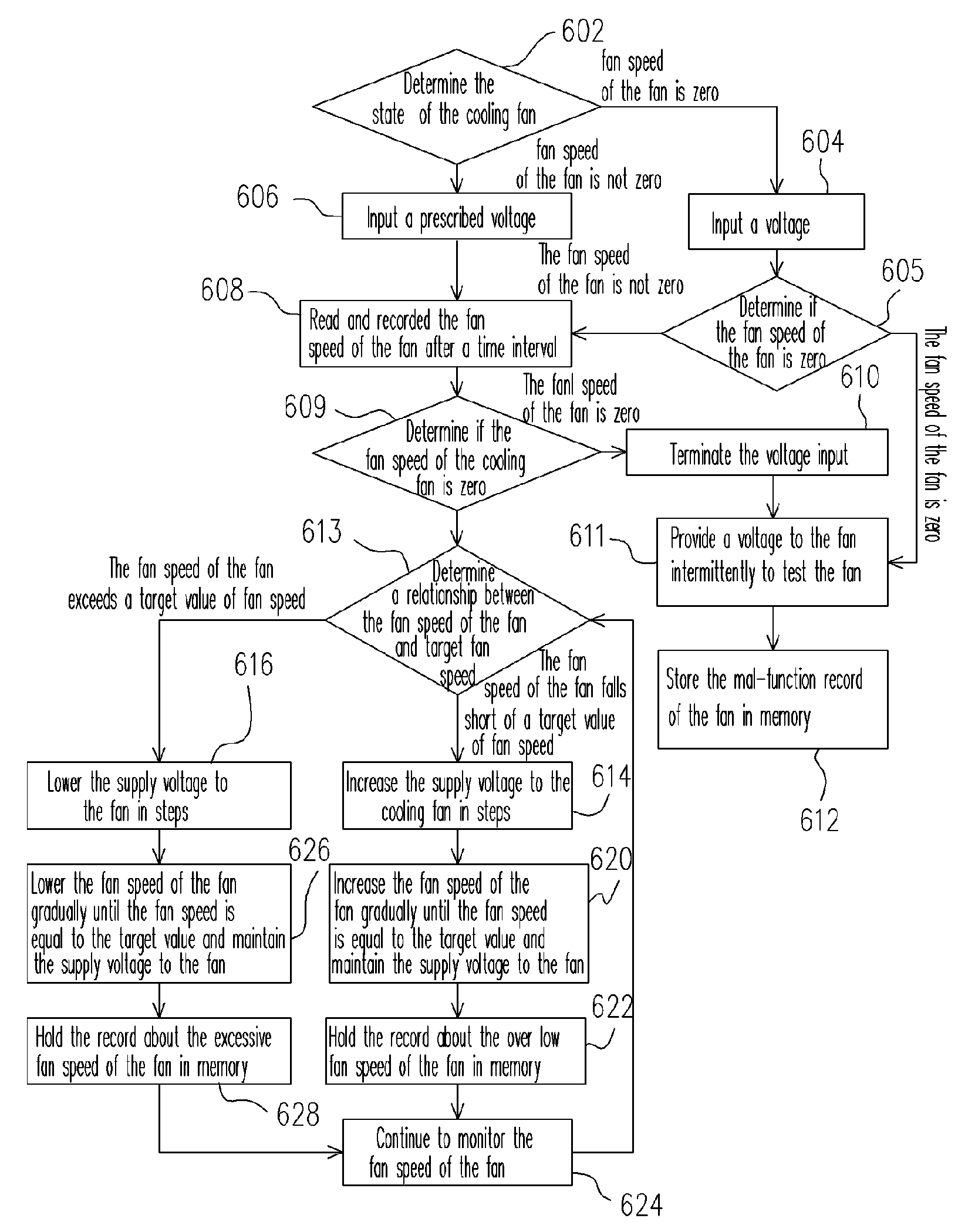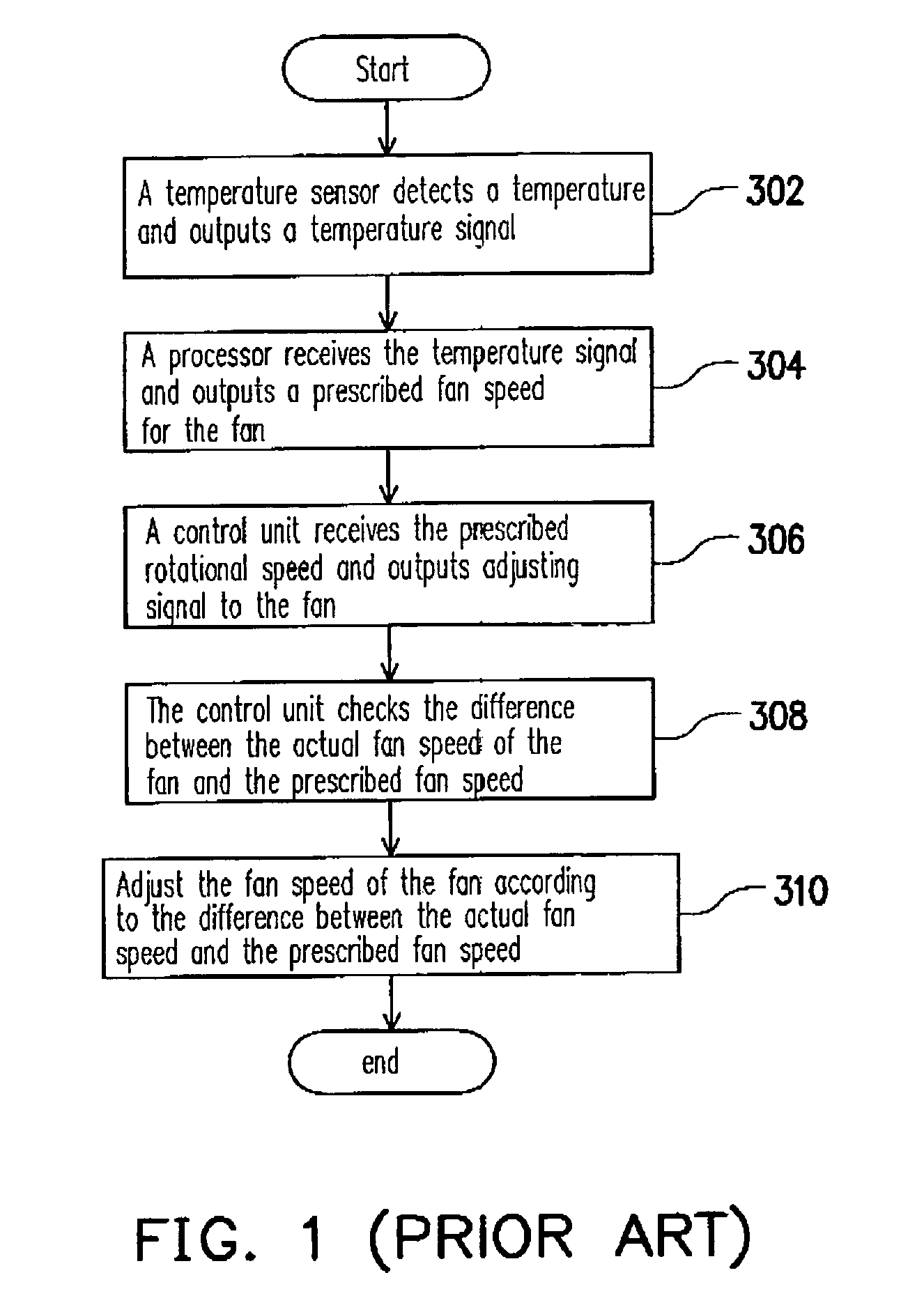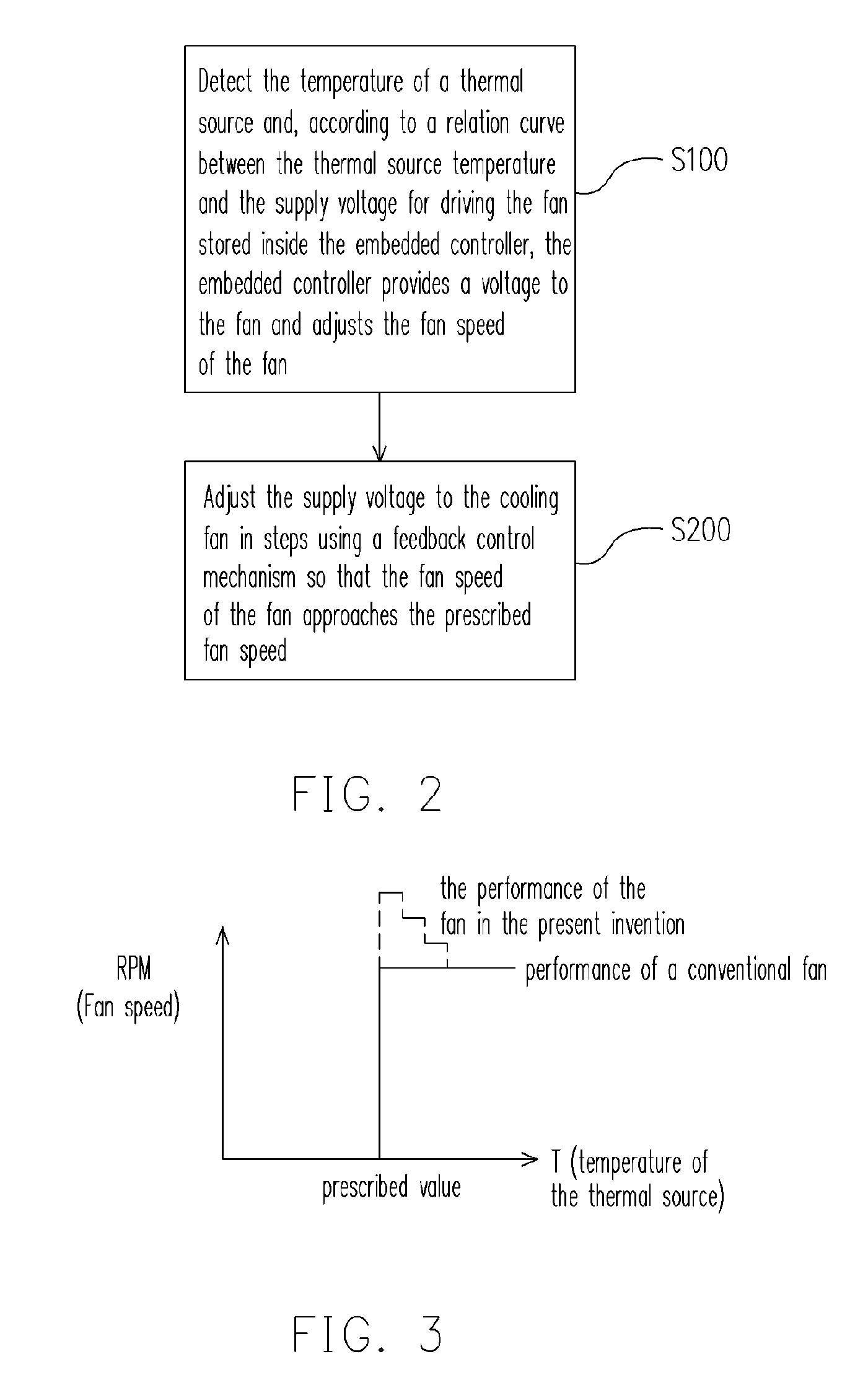Method for auto-regulating fan speed
a technology of fan speed and auto-regulation, which is applied in the field of auto-regulating the speed of the fan, can solve the problems of easy over-heating of the operating temperature inside the system, insufficient heat conductivity of the ic chip, and easy over-heating of the air steam, so as to prevent any damage due to an excessive rise in the temperature of the thermal source, the effect of increasing the cooling rate of the fan
- Summary
- Abstract
- Description
- Claims
- Application Information
AI Technical Summary
Benefits of technology
Problems solved by technology
Method used
Image
Examples
Embodiment Construction
[0025]Reference will now be made in detail to the present preferred embodiments of the invention, examples of which are illustrated in the accompanying drawings. Wherever possible, the same reference numbers are used in the drawings and the description to refer to the same or like parts.
[0026]FIG. 2 is a flow chart showing the steps for auto-regulating the fan speed of a cooling fan according to one preferred embodiment of the present invention. As shown in FIG. 2, the method for auto-regulating the fan speed of the cooling fan comprises the following steps. In step S100, the temperature of a thermal source is detected. Thereafter, according to a curve relating the temperature of the thermal source with the voltage for driving the fan stored inside an embedded controller, the embedded controller provides a corresponding voltage to the fan to adjust the fan speed. In step S200, a feedback control mechanism is utilized to adjust the supply voltage to the fan in steps so that the fan s...
PUM
 Login to View More
Login to View More Abstract
Description
Claims
Application Information
 Login to View More
Login to View More - R&D
- Intellectual Property
- Life Sciences
- Materials
- Tech Scout
- Unparalleled Data Quality
- Higher Quality Content
- 60% Fewer Hallucinations
Browse by: Latest US Patents, China's latest patents, Technical Efficacy Thesaurus, Application Domain, Technology Topic, Popular Technical Reports.
© 2025 PatSnap. All rights reserved.Legal|Privacy policy|Modern Slavery Act Transparency Statement|Sitemap|About US| Contact US: help@patsnap.com



